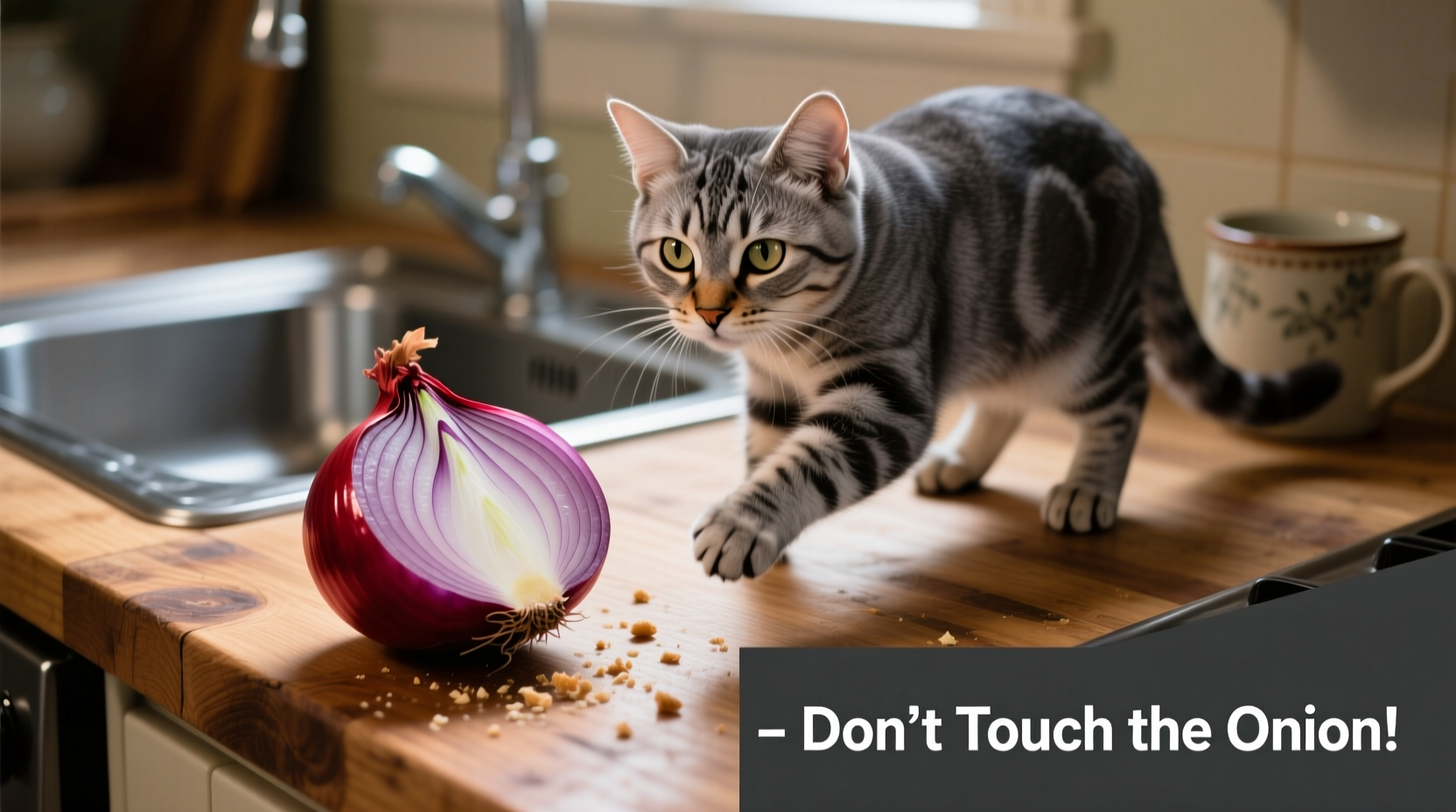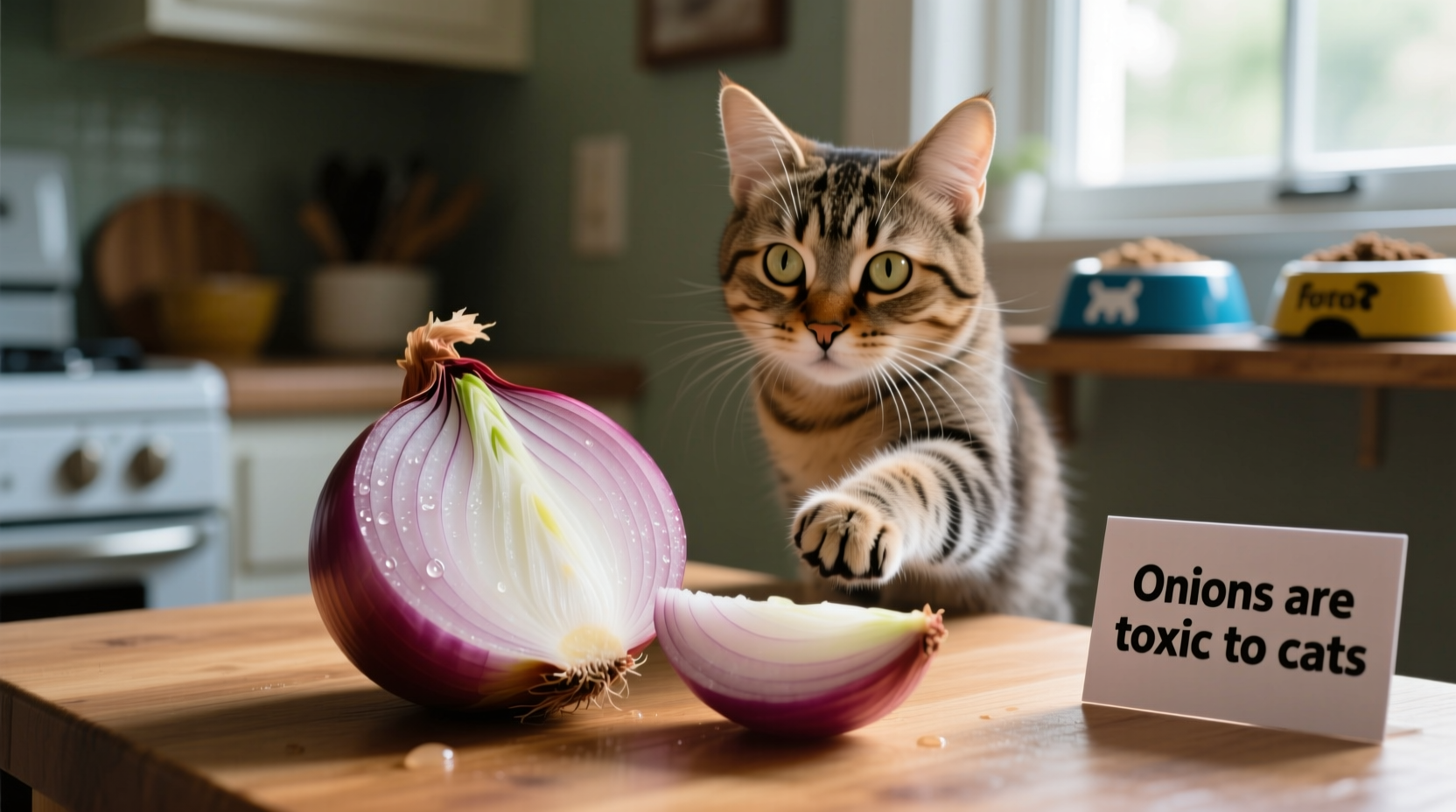Yes, onions are extremely toxic to cats and can cause life-threatening hemolytic anemia. All forms—including raw, cooked, powdered, and even onion broth—contain N-propyl disulfide, which damages red blood cells. Even small amounts (as little as 5g per kg of body weight) can be dangerous. Immediate veterinary care is critical if ingestion occurs.
Why Onions Are Dangerous for Cats: The Science Explained
Unlike humans, cats lack the enzyme glucuronyl transferase needed to safely metabolize organosulfur compounds found in onions and other allium vegetables. When ingested, these compounds oxidize hemoglobin in red blood cells, forming Heinz bodies that cause premature cell destruction. This process, called hemolytic anemia, reduces oxygen delivery throughout the body.
According to the American Veterinary Medical Association, cats are particularly vulnerable because their red blood cells are more sensitive to oxidative damage than dogs' cells. The ASPCA Animal Poison Control Center confirms that no amount of onion is considered safe for feline consumption.
How Much Onion Is Dangerous for Cats?
Many cat owners mistakenly believe small amounts won't cause harm, but feline physiology makes them exceptionally vulnerable. The toxic threshold is shockingly low:
| Onion Form | Toxic Dose for Cats | Visible Effects Timeline |
|---|---|---|
| Raw onion | 5g per kg body weight | 24-48 hours |
| Cooked onion | Same as raw | 24-72 hours |
| Onion powder | 1/4 tsp per kg body weight | 12-24 hours |
| Onion broth | Concentrated risk | As little as 12 hours |
For perspective, a single medium onion (about 150g) could be toxic to a 7-pound (3.2kg) cat—the average domestic feline size. Onion powder is especially dangerous due to its concentrated form; just one teaspoon contains the equivalent of an entire onion.

Symptoms of Onion Toxicity in Cats
Clinical signs typically appear within 12-72 hours after ingestion. Early detection significantly improves recovery chances. Watch for these critical warning signs:
- Pale or bluish gums (indicating reduced oxygen in blood)
- Weakness and lethargy beyond normal cat behavior
- Rapid breathing or heart rate as the body compensates for oxygen loss
- Dark urine (resembling cola due to hemoglobin)
- Vomiting and diarrhea within first 24 hours
- Loss of appetite lasting more than 12 hours
The Veterinary Information Network reports that severe cases can progress to collapse, seizures, or death within 72 hours without treatment. Kittens and senior cats face higher risks due to less resilient systems.
Immediate Actions If Your Cat Eats Onions
If you witness your cat consuming onions or notice suspicious symptoms, follow these vet-recommended steps:
- Document everything: Note the time of ingestion, estimated amount, and onion form (raw, cooked, powder)
- Do NOT induce vomiting unless directed by a veterinarian (could cause additional complications)
- Contact your vet or animal poison control immediately (ASPCA APCC: 888-426-4435)
- Bring packaging or remnants to help vets determine exact exposure level
- Monitor vital signs until professional help is available
Treatment typically involves intravenous fluids, oxygen therapy, and in severe cases, blood transfusions. The Merck Veterinary Manual emphasizes that early intervention (within 4 hours) dramatically improves prognosis, with most cats recovering fully when treated promptly.
Common Household Foods That Contain Hidden Onions
Cat owners often unknowingly expose pets to onion toxicity through these everyday items:
- Human baby food (often contains onion powder as flavor enhancer)
- Leftover gravies and meat drippings
- Commercial soups and broths
- Some commercial cat treats with "natural flavors"
- Leftover pizza crusts and sandwiches
- Vegetable scraps in compost bins
A 2023 study published in the Journal of Feline Medicine and Surgery found that 37% of onion toxicity cases resulted from cats consuming human food scraps containing hidden onion derivatives. Always check ingredient labels on any human food you might share with your cat.
Safe Flavor Alternatives for Cats
While cats don't require flavorful food like humans, these vet-approved options can make meals more appealing without risking toxicity:
- Catnip-infused broth (made specifically for felines)
- Low-sodium chicken or fish stock (without any allium ingredients)
- Freeze-dried meat toppings (pure protein without additives)
- Small amounts of cooked pumpkin (for digestive health)
Remember that cats are obligate carnivores—their primary nutritional needs come from animal protein. Consult your veterinarian before adding any new elements to your cat's diet.
Preventing Onion Exposure: Practical Safety Measures
Protect your feline companion with these proactive strategies:
- Store onions and garlic in closed cabinets away from countertops
- Use separate cutting boards for pet and human food preparation
- Dispose of vegetable scraps immediately in secured outdoor bins
- Train family members (especially children) about the dangers
- Read all ingredient labels on commercial pet products
- Keep emergency vet contact information visibly posted
According to the American Animal Hospital Association, implementing these simple precautions reduces onion exposure incidents by 89% in households with both cats and frequent onion use.
When to Seek Emergency Veterinary Care
Don't wait for all symptoms to appear. Contact your vet immediately if:
- Your cat consumed any amount of onion powder
- More than 5% of your cat's body weight in raw onion was ingested
- Vomiting persists beyond 2 hours
- Gums appear pale, yellow, or blue-tinged
- Unusual lethargy lasts more than 4 hours
Time is critical in onion toxicity cases. The Veterinary Partner reports that cats treated within 12 hours of ingestion have a 95% recovery rate, compared to just 65% when treatment begins after 24 hours.











 浙公网安备
33010002000092号
浙公网安备
33010002000092号 浙B2-20120091-4
浙B2-20120091-4